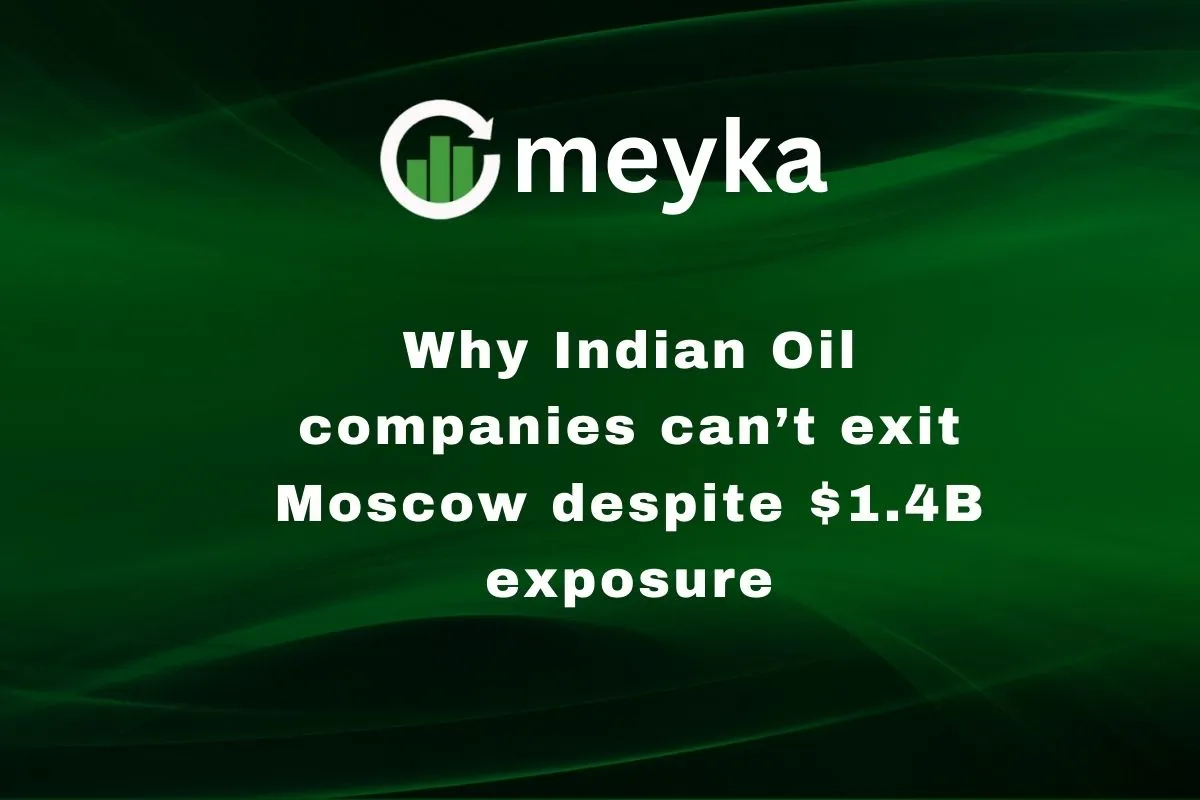Why Indian Oil companies can’t exit Moscow despite $1.4B exposure
Indian oil firms have a big problem in Moscow. About $1.4 billion in dividends and payments are stuck in Russian accounts. This money comes from stakes and operations Indian companies hold in Russian oil projects. On paper, leaving looks simple. In reality, many forces keep Indian Oil and other firms tied to Moscow. We will explain why exit is hard. We will also show what it means for India’s energy security and business risk.
The scale of exposure
The sum trapped in Russia is large. It comes from dividends, joint ventures, and long-term contracts. Public sector firms and some private refiners earn this money from Russian oil fields and partners. That total has climbed to nearly $1.4 billion as payment channels tightened after late-2022 sanctions. In some cases, firms even reported about $330 million they could not repatriate because of banking restrictions. Why is exiting so difficult?
Sanctions and banking rules
Western sanctions and shipping restrictions have made normal bank transfers risky. Many global banks avoid Russia now. This blocks simple repatriation of funds. That is one core reason the money stays in Moscow.
Contract and joint-venture law
Many projects are joint ventures with Russian state-backed firms. Exiting a JV is legally tricky. Contracts often span decades. Walk-away costs can be huge. In some global cases, companies faced big write-downs when they left. That makes firms think twice before quitting.
Financial cost and sunk investment
We have invested billions over the years. Those are sunk costs. Selling assets now could mean heavy losses. For big projects like Sakhalin-1, other companies took large losses when they tried to exit. That history raises fear of a costly exit.
Payments and currency barriers
Even when oil flows, payments get blocked or delayed. The rupee-rouble mechanism and alternative currency channels exist. But they are new and limited. Many traders still route deals via third-country currencies and UAE intermediaries to avoid blockages. That makes tidy exits or transfers harder.
Strategic value of Russian oil for India
Russia sells at discounts now. That helps Indian refiners lower costs. India imports most of its oil. We import over 85% of our crude needs. Cheap Russian barrels, therefore, matter for fuel prices and industry. Staying linked to Moscow reduces short-term import bills.
India has also diversified away from sole dependence on the Middle East. Russian crude gives us leverage in global buying. For this reason, companies such as Indian Oil, Bharat Petroleum, and ONGC-Videsh see strategic value in keeping ties.
Global pressure vs national interest
Many Western countries press firms to cut ties with Russia. They warn of reputational damage and secondary sanctions. India faces that pressure. At the same time, the government must keep fuel affordable for the public and industry. That makes New Delhi cautious. India often prioritizes energy security and low prices. So the national interest can clash with diplomatic pressure.
Operational and reputational risks of staying
By staying, firms get cheap crude now. But risks pile up. If sanctions tighten, assets may become stranded. Payments might be frozen longer. The firms could face foreign investor scrutiny and brand damage. We must balance short-term gains against long-term reputational cost.
Possible ways forward
Partial dilution or partner swaps
Firms can look to sell minority stakes. This may reduce exposure while keeping supply lines open. However, finding buyers willing to touch Russian assets is hard.
Improve payment channels
The rupee-settlement plan and other local arrangements can help. But these mechanisms are still limited. Widening their use would ease cash repatriation. India is studying options to clear payments via selected banks.
Diversify supplies and accelerate renewables.
We should buy more from other suppliers. We can also speed up the energy transition at home. Over time, this will lower reliance on any single partner. That reduces future exposure to geopolitical shocks.
Conclusion
The link between Indian Oil companies and Moscow is not just a business tie. It is a result of law, money, and national strategy. We get cheap oil and better energy security by keeping ties. But that comes with trapped cash and reputational risk. Exiting now would cost a lot. So, for many firms, an immediate pullout is not possible. Instead, India and its oil firms are walking a tight line. They must protect the short-term supply while working to reduce long-term risk.
Disclaimer:
This content is for informational purposes only and is not financial advice. Always conduct your research.






